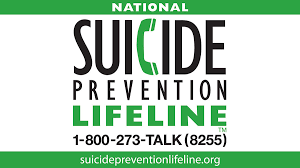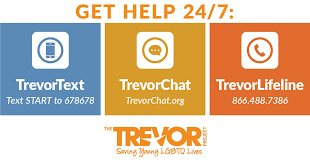- Lancaster School District
- Suicide Prevention
Pupil Safety and Attendance
Page Navigation
- Home
- Attendance
- Contact Us!
- Emergency Preparedness
- Firearms Safety
- Foster Youth Resources
- Interdistrict and Intradistrict Transfers
- Links
- Positive Behavior Interventions & Supports (PBIS)
- Safety Personnel
- School Counselors
- School Safety
- Bullying Prevention
- Yondr FAQ
- Social-Emotional Assessments
- Suicide Prevention
-
Suicide Prevention Family Resources

Lancaster School District is proud to provide suicide prevention resources in response to AB 2246 and AB 1767, which are laws that mandate school districts to establish and implement suicide prevention policies for students in grades K-12.
Did you know that suicide is the second leading cause of death among youth 14 years and older? In 2019, 9.2% of youth attempted suicide in the previous 12 months, while 26.6% of youth reported having seriously considered attempting suicide in the previous 12 months. These are alarming statistics that have increased since 2017.
Lancaster School District school counselors and psychologists are available at every school site. They have been trained to assess suicidal ideation and respond appropriately to the level of threat identified. It is the top priority of our counselors and psychologists to ensure the safety of the students in our school district. Please use our counselors and psychologists as resources, in addition to the information provided on this website.
In the links below, you can find information regarding warning signs and risk factors of youth suicide, as well as how to respond if you find out your child has suicidal thoughts or attempts. We provide you with crisis hotline information and local mental health providers. Also, take a look at the two video links for important messages for parents.
If you have questions about the Lancaster School District Suicide Prevention Policy or need more information to support your child, contact Trish Wilson, Coordinator of Climate, Culture and Counselors in Pupil Safety and Attendance 661-723-0351 ext. 467.
Lancaster School District Suicide Prevention Policy
The Lancaster School District Suicide Prevention Policy in accordance with AB 2246 and AB 1767.
Suicide Prevention Policy 5141.52
Suicide Prevention Administrative Regulation 5154.52
Staff Development
The Lancaster School District provides training to teachers and staff annually that addresses how to identify appropriate mental health services at the school site and within the community, and when and how to refer students and their families to those services. Other areas that will be part of the training include identifying high-risk groups of students impacted by suicide, individual risk factors, warning signs that may indicate suicidal intent, protective factors, instructional strategies for promoting mental and emotional health, appropriate ways to interact with a student in distress, and district procedures for responding after a suicide has occurred.
Instruction
Suicide prevention lessons for students in K-8 will be incorporated into the health education curriculum in an age-appropriate manner. The lessons will include identifying and analyzing signs of depression, self-destructive behaviors and other mental health conditions that can lead to thoughts of suicide. In addition, coping and resiliency skills will be addressed as well as how to listen to and get help for a friend who is showing signs of suicidal intent. Students will also be provided information related to which adults to seek out for help, school resources, and/or community resources, recognizing there is no stigma associated with seeking mental health services.
Student Identification Cards
Student identification cards for middle school students will include the National Suicide Prevention Lifeline telephone number and the Crisis Text Line, as well as other crisis hotline telephone numbers.
Intervention
When a student expresses thoughts or actions associated with suicidal ideation, the student will be immediately referred to a mental health professional on the school site. The mental health professional will conduct a suicide assessment and determine the level of risk of the threat. The mental health provider will then develop an intervention plan based on the level of risk and execute that plan. The principal or designee will follow up with the parent in a timely manner and provide referrals to appropriate services, if needed. If a child is hospitalized, the parents and appropriate school staff will make every effort to meet prior to the student returning to school in order to develop a re-entry plan and discuss supports that will be put in place at school.
Suicide Information for Parents
The following documents provide parents with information pertaining to the risk factors and warning signs of youth suicide. They also indicate what to do if your child expresses suicidal thoughts.
Parent Guidelines - Elementary
Parent Guidelines - Middle School
Parent Guidelines - Middle School (Spanish)
Parent Guidelines - Elementary (Spanish)
Videos for Parents
Teen Suicide Prevention - Parent Message
World Suicide Prevention Day (Trevor Project)
Mental Health Providers and Crisis Hotlines
The following documents provide a list of local mental health providers as well as crisis hotlines parents.
Suicide Crisis Hotline (English)
Suicide Crisis Hotline (Spanish

The National Suicide Prevention Lifeline provides free and confidential emotional support to people in suicidal crisis or emotional distress 24 hours a day, 7 days a week, across the United States. The Lifeline is comprised of a national network of over 150 local crisis centers, combining custom local care and resources with national standards and best practices.
www.suicidepreventionlifeline.org


The Trevor Project is the leading national organization providing crisis intervention and suicide prevention service to lesbian, gay, bisexual, transgender, and questioning youth. Confidential and available 24 hours a day, 7 days a week.


